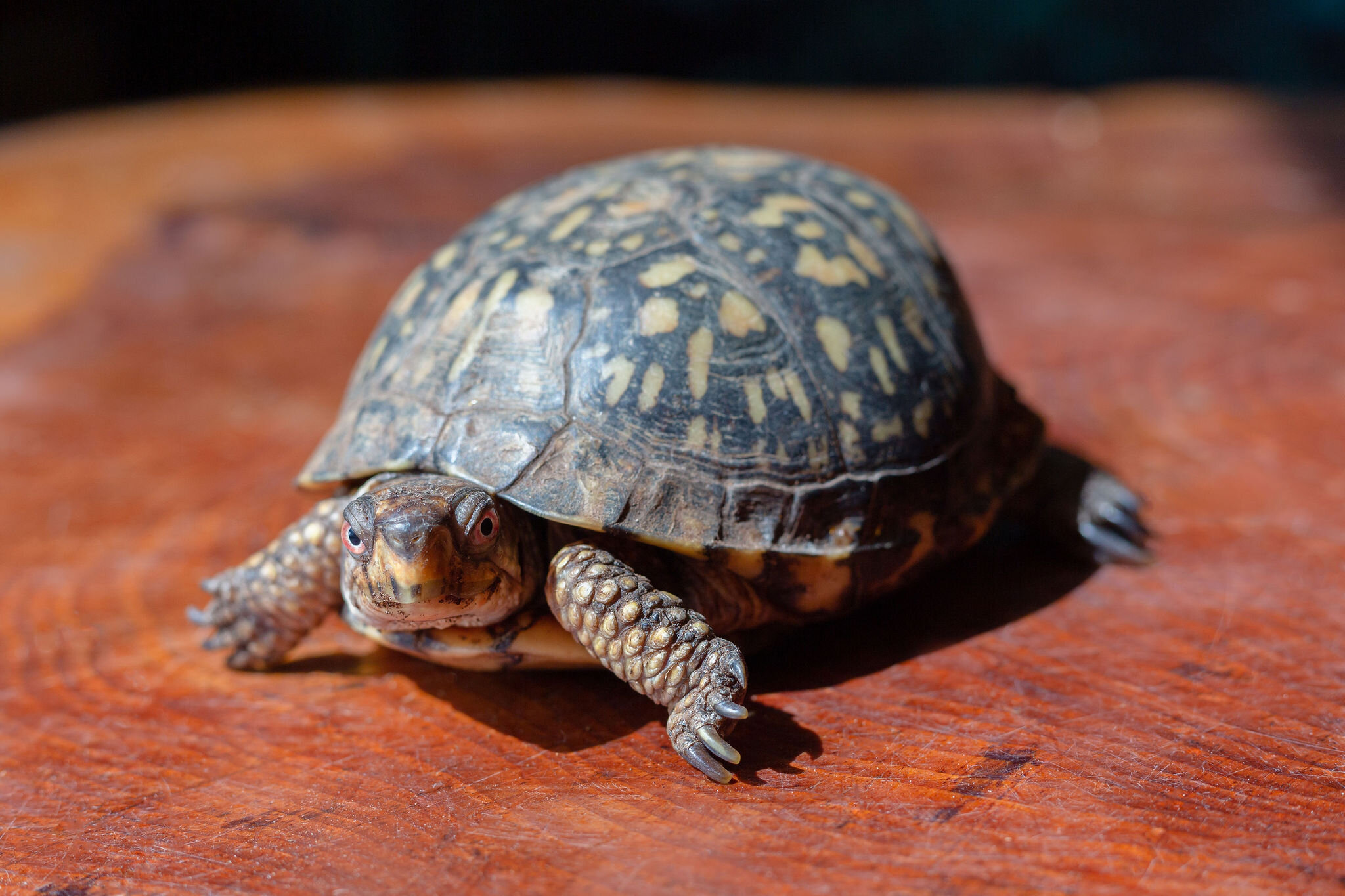Eastern Box Turtle
Terrapene carolina carolina
Class: Reptile
Average Size: 4-6 Inches
Lifespan: 25-35 years
Diet: Omnivore
Habitat: Woodlands, thickets, marshes
Conservation Status: Vulnerable
The Eastern box turtle is the only species of box turtle found in New Jersey. This terrestrial turtle species can be found roaming in deciduous woodlands or hiding under logs. The Eastern box turtle can be identified by its highly domed carapace (Top Shell), covered in yellow or orange blotches against a black or brown base. The plastron (Bottom Shell) is black or brown and may have yellow or cream patterning. This turtle also has a hooked beak and stout legs with webbed back feet. Eastern box turtles range in size from 4.5 to 8 inches in length. Typical male box turtles display darker eyes of reddish shades, while females display lighter eyes of orange and yellow shades The name box turtle is derived from the turtle's ability to completely withdraw its head and limbs into its shell for protection. The hinge found on the plastron makes box turtles unique in their ability to completely hide in their shell from a predator.
Eastern box turtles emerge out of hibernation in April to search for food and begin breeding. Box turtles do not breed until they are at least 10 years old. Female box turtles will travel across their home range from mid- May to June in search of a nesting site. However, they do not have to do this every year since they can store sperm for up to 4 years. The female will excavate a nest and lay 3-8 eggs before covering the nest with soil and leaving the baby turtles to hatch on their own. Nests that are left vulnerable can sometimes be raided by mammals and birds that will eat the eggs before they can hatch. After 2 months, the box turtles will hatch, but they will not receive parental care. The turtles are most vulnerable in their first 5 years of life since they cannot fully contract in their shells for protection against predators. Young box turtles are often eaten by foxes, raccoons, skunks and raptors.
Eastern box turtles are omnivores and will eat earthworms, slugs, snails, leaves, grass, fungi and berries. Once box turtles reach maturity, they have almost no natural predators; however, they are far from safe. Eastern box turtle populations are highly affected by anthropogenic threats. Habitat loss is the largest threat since box turtles have limited ranges and do not adapt well to new environments. In addition, illegal collection for the pet trade decimates breeding populations faster than they can recover. Roadside collisions are also detrimental for box turtles since pregnant female turtles are often found crossing roads, looking for nesting grounds. Leaving turtles wild, driving carefully, and leaving nesting sites alone are the best ways to preserve this species.
Want to learn more about the Eastern Box Turtle? Visit the NJDEP Division of Fish and Wildlife






